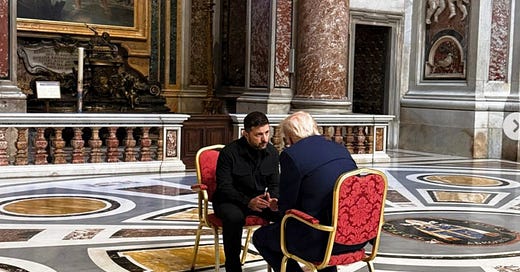Divine Intervention or a Whisper: US–Ukraine Mineral Agreement Signed
Whisper in Grandpa's Ear | Russian Response | Elusive Peace
Dear BWR Shoeshiners and Barbers!
IMPORTANT NOTICE: Please be aware that some e-mail servers (G-mail in particular) may truncate the BWR newsletter, thus depriving you of total enjoyment. If this problem occurs, please read BWR on the Substack platform to enjoy the full newsletter.
Follow BWR’s daily posts on the Blue Sky platform for daily updates and posts.
Keep reading with a 7-day free trial
Subscribe to Barbershop Whispers....Russia (Adam A Blanco) to keep reading this post and get 7 days of free access to the full post archives.



